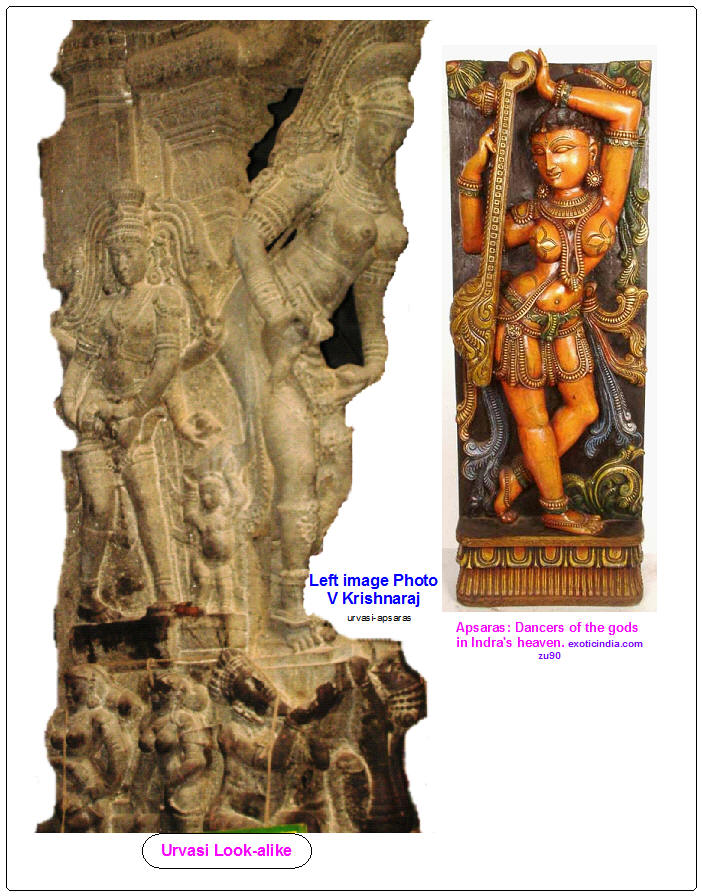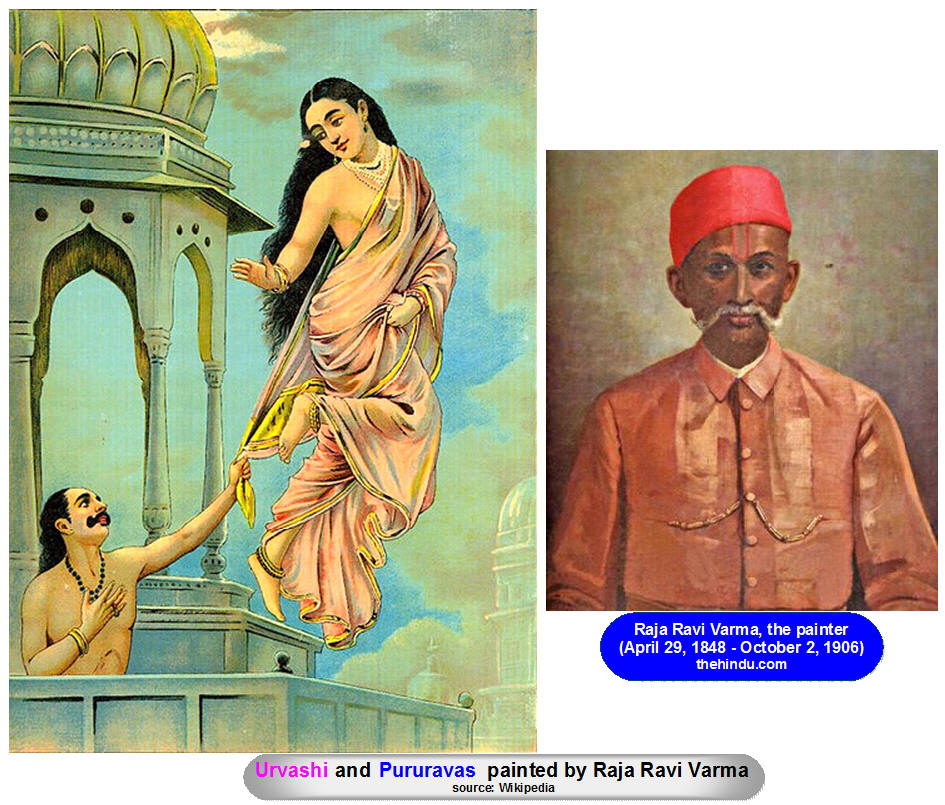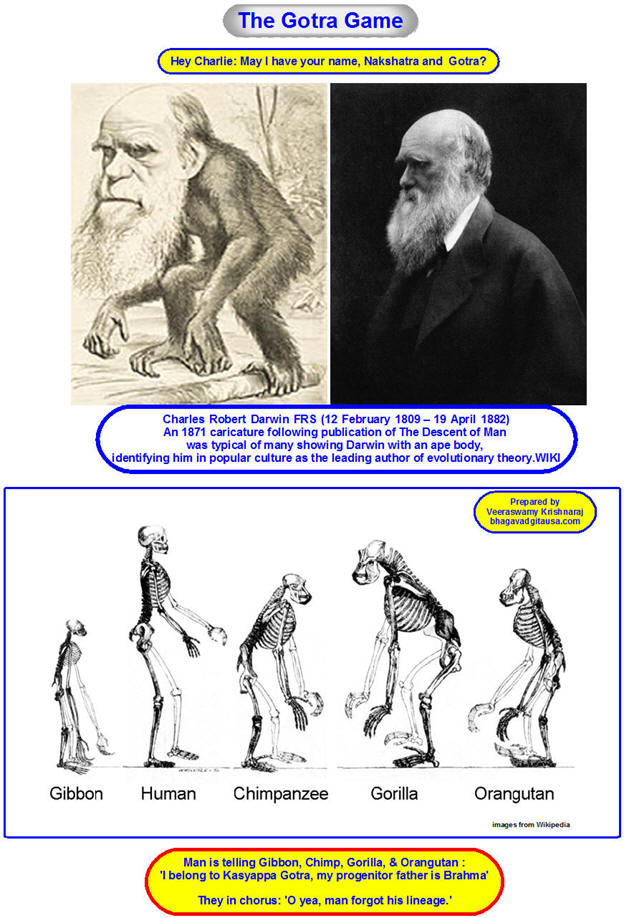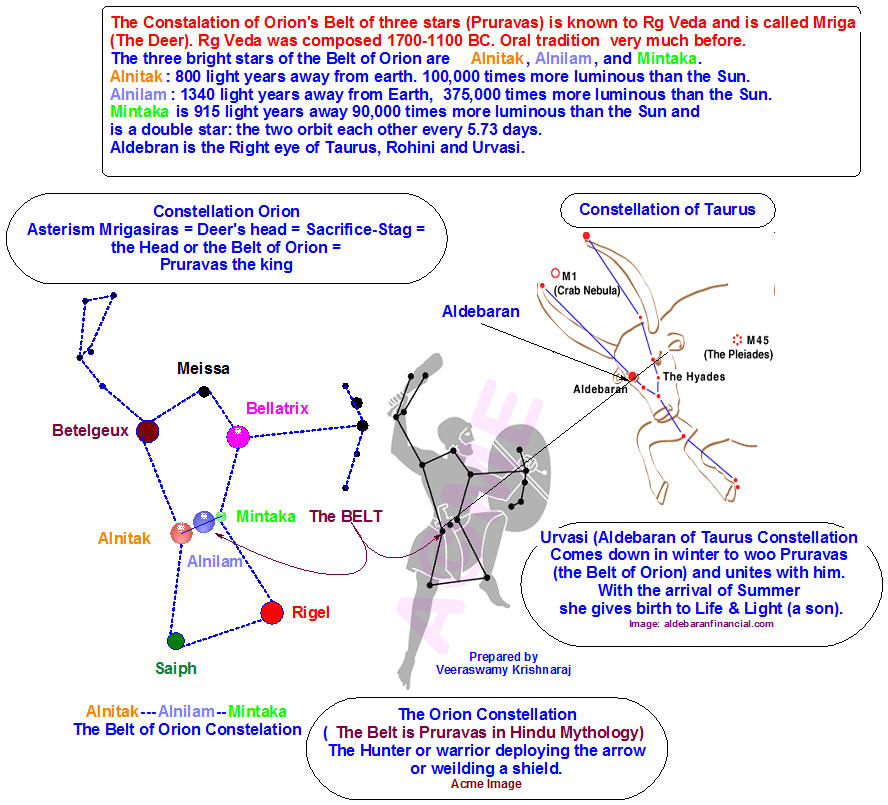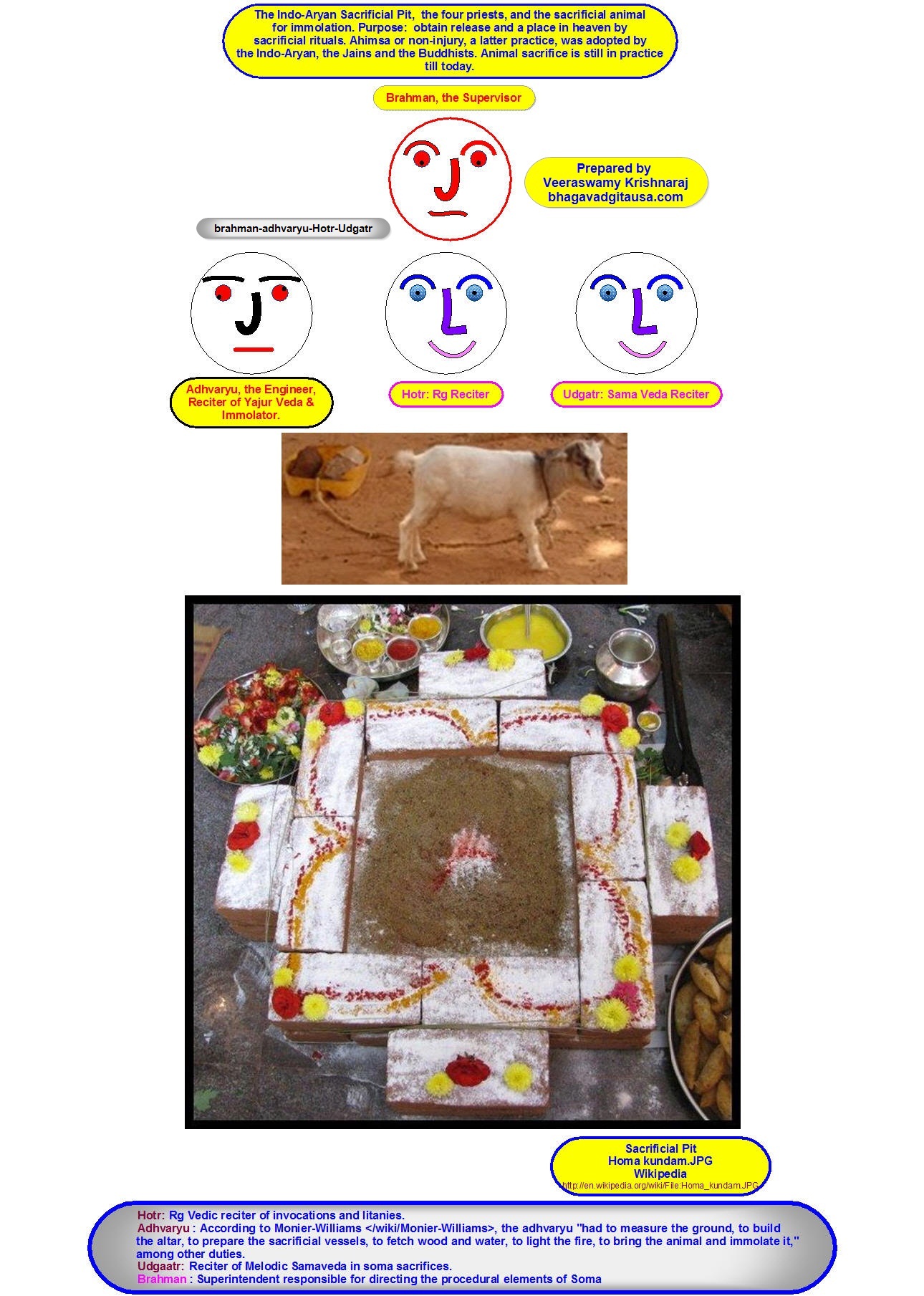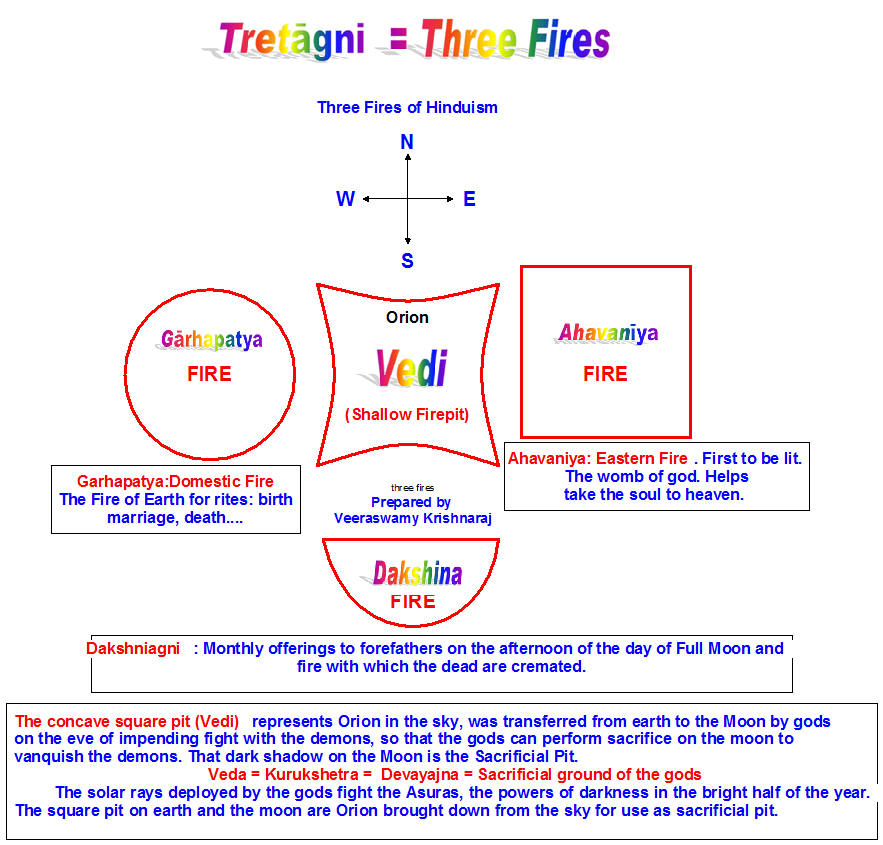Veeraswamy Krishnaraj
Urvasi (उर्वशी
= Ur + Vasi = Heart + Control. Apsaras,
dancer in Indra's heaven came down to earth; mistress of
Gandharva; a perennial youth; the one who conquers the heart; a
drop-dead beauty in the heavens came down to earth and married
prurient Purūravas on the condition she would eat only one drop
of butter once a day (low self-maintenance), she would keep her
pet rams always by her bedside, and that Pururavas would not
appear naked to her except in bed. Purūravas (पुरूरवस्
=
purū + ravas "crying much or loudly" )
was a machismo muscle man with a ton of Mojo (actually a
celestial on earth). He, the frequent flyer to Indra's heaven,
took his chariot to heavens and drove it at a breakneck speed
that scattered the clouds and fluttered the heart of Urvasi who
bowled over and called out Purūravas to save her from a demon. Their
eyes met and sparks flew. Her body grazed his and his body
warmth was titillating; their breaths came together bathing each
other's face.
She
never felt in heaven such warmth as in a human body.
►▼
They had to part hoping they would meet again. Each dwelled in
the mind and soul of the other. One day Urvasi was dancing in
the court of Indra playing the role of Lakshmi before Vishnu, a
galaxy of gods and a crush of Celestials. During her song and
dance performance in a reverie, instead of eulogizing the name
of 'Vishnu' she uttered the name of Purūravas, a fallen and
degraded Celestial and a mere earthling at that time. Sage Bharata
sagged in his seat hearing this sacrilege and later got up and
stood on his seat with his mouth agape. Mitra and Varuṇa, the
frequent ejaculators, were always on-the-brink hyperexcitable
celestials; the sight of Urvasi was so overwhelming they simply
could not contain themselves, lost control of their retentive
faculty and emitted their celestial seeds. They were so
embarrassed by this reflexive paroxysmal effluence, whose
blame was assigned to Urvasi; they excommunicated her, for no
fault of hers, from heavens. They reasoned, "We can't be
emitting like this in heaven in unison at the sight of Urvasi in
the presence of gods and goddesses. We have to safeguard our
retentive faculty and reputation. We have no other recourse than
to excommunicate her to earth."
►▼
Apsaras =
अप्सरस्
=
அப்ஸரஸ்.
Essence of the waters, moving in and between the waters, moving
in the clouds. A class of female divinities. They inhabit the
sky and often visit the earth. They are wives of Gandharvas.
They can change their shape at will. Their Lord is Indra. They
love playing in water. --Monier Williams Dictionary.
They dwell also in Svarga or Indra's heaven. They dance as the
Gandharvas sing for the gods. They morph into any form; their
favorite morphing is to a bird. Since they are beautiful and
seductive, many claim their parentage: Prajāpati; the churning
ocean of milk, Bhasi; the mother of birds. Seductive beauties
have many fathers; no one claims the Uglies.
The gods dispatch (as in James Bond 007 series) Apsaras (the
celestial nymphs) to seduce Rishis and ascetics and then drive
them insane. They are well suited for this job description
because they embrace promiscuity with glee, glow and abandon and
or nymphomania (as if indulging in many kinds of deserts) avidly
and willingly; they have no maternal bond with their offspring
so much so they abandon the babes on earth and once their
pudendal and pelvic passados, sports, pastimes and missions are
executed
with no flaw, they fly back to heaven abandoning the babes to
report back to the mission headquarters in heaven.
Their name indicates they have a smell about them. They like to
hang around trees, bushes and plants. If you find an herb, a
plant, a leaf, a bark, a stem... having a fragrance, it is
because Apsarases are dwelling in them. Take the cinnamon bark
and all the culinary herbs for instance. Since the floras grow
from the earth, the Apsarases have a basic earthy odor. Mother
earth is their mother and Father heaven the father. Our luck is
that our fathers and mothers are earthbound; that is why we
can't fly to heaven as they do. But Purūravas (a fallen
celestial) had that ability. In the universe, they are the
frequent fliers and accumulate many miles. With the way the gas
(petrol) prices are nowadays (Somebody questioned the high gas
prices in the presidential debate on Oct 16, 2012.), you may
think they worry about the cost of flying. No cause for worry.
They fly by thought. No gas, no waiting on line, no taking off
the shoes or underwears! no security clearance, no intrusive
body searches, no embarrassing images, no OPEC, no passport, no
visa. You think Los Angeles; you zap up and zip to LA; you had
lunch in NY and are there in LA for breakfast on the same day.
If you have special powers to recognize an Apsaras, you can tell
them off, "Get lost and go back to your tree or woods. Go and
hide in your fragrant bush." I don't understand why an earthling
upon seeing a luscious, lascivious and licentious Apsaras would
tell her off. Go figure. They are endowed, sinuous, naturally
fragrant, seductive and willing to carry out their mission, the
kind of mission dreams are made of. (Think of all these herbal
lotions, potions, liquid soaps, fragrances... that men and women
wear or use nowadays. If only you have an Apsaras by your side,
her natural (nothing artificial there) fragrance will rub off on
you.) That Mantra of rejection does take away their powers of
flight, morphing &c. In reality, who wants to dismiss such a
damsel with undying youth, heavenly body, divine smell, fragrant
mouth, sharp mind and pelvic thrusts? She is not your proverbial dumb blond--all
appearance and no stuff in the Nano-thin cerebral mantle with no
convolutions. Judge for yourself. The problem is they are not
sighted easily. Their favorite trees are Nyagrodha, Aśvattha,
and Udumbara trees (न्यग्रोध,
अश्वत्त,
उडुम्बर
=
Ficus Indica, Ficus Religiosa, and Ficus racemose). If you hear
the divine sound of cymbals and lutes coming from these trees,
you know they are up there in the trees. Don't mistake the
rustle of the leaves, whooshing of the wind, the pirouetting and
chattering of the leaves on their petioles and the wild movement
of the branches as music and dance of the Gandharvas and
Apsarases. They are sought after by humans to bestow favors
during wedding processions. What is a wedding procession without
music? If you are habituated to gambling, you need to look no
further, but to seek their favor. This is my tip to trippers to
Atlantic City and Los Vegas.
►▼
The sacred texts have differing numbers in their census, which
ranges from 42,000 to 35,000,000. My explanation of the
undercount is that upon arrival of the census takers, they go
into hiding in the trees, bushes and other thick foliage. They
are aliens anyway on earth. They don't want to be discovered and
deported until their pelvic mission is accomplished. They scoot
on seeing census takers and Border Patrol Agents. UAVs have no
value in locating them. When the UAVs fly, they morph into ants.
They can disappear in thin air. They can jump walls. Since they can assume any shape
and form and when the BPAs arrive, they look like squirrels,
porcupines, groundhogs... It is better not to round up and
corral all the said animals thinking they are illegal aliens. On
the way to the Tall Wall, they simply disappear and you are left
with the bag. Thermal imaging has no value, because their body
temperature blends well with the surroundings.
Factoids: They don't ask for any entitlement benefits like earth
people do: Social Security, Medicare, Medicaid, Disability
payments. They easily chummy up with republicans. And yet they
hide in their favorite trees, not asking for entitlements.
June-July 2011.
While Apsarases attend Soma (Moon god), their husbands the
Gandharvas attend Varuṇa, the god of the sky. I don't like to
say anything bad about the wife of Varuṇa, the god of the sky,
rain, law and order.
If you notice a person with dropsy, ask him to seek forgiveness
from Varuṇa, because the patient may have offended Varuṇa, the
proof being his dropsy. He is quick to anger and yet melts with
compassion and cures his petitioner. He does not have the
wherewithal for all sicknesses and maladies of the world. He
himself once suffered from erectile dysfunction and received
herbal remedy from a Gandharva. He is associated with horses and
ocean. The remedy made him the enviable stallion of all times.
It was a one-dose remedy. Take a back seat, Viagra, Cialis and
the like. One dose of the herbal remedy cured him of his ED;
that would put all ED companies out of business. He is the Lord
of waters and rides an aquatic animal, Makara.
But the fact remains his wife Varuṇāṇi, the goddess of wine,
goes tipsy-topsy-turvy sometimes. Reports of her drunken driving
of her superfast aerial cars, her arrest by her husband's law
and order celestial cops in unmarked flying chariots, revocation
of license or any pending arrest warrants have not thus far been
unearthed (found) by any paparazzo or sleazy yellow
journalists. I bet she always has a designated driver to drive
(pilot) her around, whenever she tastes too many sampling wines
in the likes of Napa Valley, Finger Lakes winery tours, wine
tasting tours in France, Italy and Spain and the best of all in
the cellars of heaven. They appear as human beings on earth when
they go on winery tours. They can morph to any shape they want.
If you see a knockout couple in your midst on a winery tour, ask
them whether they are Gandharva-Apsaras couple from heaven. If
they screw and knit their eyebrows, scowl, pout their lips, plead
ignorance and speak in a body language that says you are crazy,
you know they are visitors from heaven. Ask the Apsaras (when
she is alone) for a one-night stand because we all know they are
pelvis-centric and promiscuous. The Apsaras will play along and
on the way to the love-nest, push you off the ledge. They have
no compunction.
You drink Soma (an inebriant and a hallucinogen) once, you want
it again and again. In Vedic Times, only Brāhmaṇas and gods
could imbibe Soma. Or you may need a prescription as
Californians do from their doctors for ganja (weed) for ailments
like whiplash, back pain, and other myriad inexorable ailments.
Now (11/2015), Ganja Mania is spreading and legal marijuana is
available in many states.
►▼
There is an inexorable, hoarse and raucous cry for legalization
of the weed. Between Soma and Ambrosia available to the
gods, there is no preference one over another. The gods drink
Ambrosia for eternal life. Soma, they drink for general
well-being and during rites, rituals, wrangling and wars.
Unfortunately, you can't buy soma; it is locked away in the
celestial cellars of Indra. When Indra went to war against
Bhagavān Krishna over a tree (Pārijāta or Wish-giving tree), he
drank the finest Soma in his cellar. Teetotaling Krishna
defeated him easily.
Effluence
had set in motion her descent to earth as consequence of the
curse of Sage Bharata, and effluent embarrassment of Mitra and
Varuṇa. They stipulated that she would have a son by Purūravas
and abandon them both and return to heaven.
They (Urvasi and Purūravas) lived happily on earth for 61,000
years with the rams in the bedroom. I bet some would want just
one night with Urvasi. They played in the groves, rested by the
lake full of lotus flowers.... (Excerpt from song: O
strutting peacock, beautiful damsel, O heavenly nymph, you have
large soft eyes, you have gentle air about you. O my fair bride,
your charming gaze, your lovely face, your cascading and
sometimes flying tresses in the breeze. My Urvasi, your hot
breath on a cold night... so said Purūravas.) Urvaśī’s condition
for marrying Purūravas was to have two pet rams in her bedroom,
and that he should not appear naked outside of the bed (Talk
about
prenup).
If the conditions were broken, she would leave him.
►▼
Aries is
symbolized by the ram. The ram represents male fertility,
aggression, and courage. A ram's horn is part of a cornucopia,
the "horn of plenty", symbolizing abundance. In history, rams
were often symbols of leadership. Aries natives are said to be
leaders and pioneers. Rams butt their heads into their enemies;
and Aries natives are thought to approach life "head-on".
--http://www.cafeastrology.com/zodiacaries.html
Vishnu Purāṇa says, "Beholding her (Urvasi) infinitely superior
to all other females in grace, elegance, symmetry, delicacy, and
beauty, Pururavas was equally fascinated by Urvasi."
(Someone said: You dogs and monkeys, stop salivating.) Confiding
in his merits, Pururavas addressed the nymph, and said, "Fair
creature, I love you; have compassion on me, and return my
affection." Urvasi, half averting her face through modesty,
replied, "I will do so, if you will observe the conditions I
have to propose." "What are they?" inquired the prince; "declare
them." "I have two rams," said the nymph, "which I love as
children; they must be kept near my bedside, and never suffered
to be carried away: you must also take care never to be seen by
me undressed; and clarified butter alone must be my food." To
these terms the king readily gave assent. --Vishnu Purāṇa,
Translation from Sanskrit by H.H.Wilson.►▼
Life in heaven was dull and boring without Urvasi around. The
gods and Gandharvas (Celestial musicians) in the heaven were
hellbent bent on getting her back to heaven by hook or
crook. Urvasi was awakened on one dark night by the cries of her
bleating ram. Purūravas also heard the same but would not move
out of the bed because he was afraid that he would be discovered
stark naked by Urvasi. The thieving and conniving Gandharva came
back again and stole the second ram. There was a ruckus in the
royal bedchamber (with a celestial nymph by the side) aggravated
by the crying rams. The king hoping, he would not be found naked
in the moonless night, woke up naked to run after the thief with
his sword. The Gandharva because of his service to Indra, the
god of thunder and lightning, invoked a brilliant flash of
lightning on the king and the chamber so much so Urvasi saw
Purūravas naked out of the bed by the lightning with a sword
aloft in his hand. Since the Gandharva accomplished his
nefarious
objective, he abandoned the bleating rams, disappeared in the
thick of night and went to heaven to report completion of his
mission. The naked king came back to his chamber; since the
compact was broken, Urvasi took off from the balcony, abandoning
Purūravas, whose pathetic hold on the end of her sari slipped;
Urvasi ascended to heavens. She looked at the pathetic
Pruravas with the corner of her eyes and waved
bye-bye as she ascended to heaven.
►▼
He was wandering naked about the world [Yes, he left the sword
behind.] and by happenstance saw Urvasi bathing in a river with
four Apsarasas. By now, the conditions of his physical
appearance were officially lifted; he could appear anyway he
wanted. Remember he never put on his clothes ever since Urvasi
left him. (During my childhood, I have seen many wandering
stark-naked Sadhus with flailing pelvic assets in the bazaars.)
Urvasi had not changed one bit from the day he laid his eyes on
her. But she looked she might be pregnant; she was carrying his
child. He begged her to come back. She obliged him by sharing
her bed with him that night but would not go with him. Instead,
she allowed him conjugal visits once a year. [How inconsiderate
of her. Ordinary man might die waiting.] She gave him six
sons:
Āyus, Dhímat, Amávasu, Viśwavasu, Śatáyus, and Śrutáyus.
For six years, she was continuously pregnant. Her beauty and
body never changed or sagged one bit through all these
pregnancies: her assets defied gravity; her posteriors were firm
as ever; her body was sinuous; there were no striae (stretch
marks on her abdominal wall, breasts or buttocks); she was
sixteen then, sixteen now and sixteen forever. The first-born
son was Āyus (Life). Pruravas continued to beg her to return to him.
The erstwhile thieving and conniving Gandharvas in heaven came
down, gave a pot of fire and asked him to divide it into three
fires according to Vedic precepts. You may ask, "what is this
all about?" Fire is important in the life of Indo-Aryans. Fire
you cook with. There is no sacrifice without fire. Sacrificial
fire (Fire god Agni) is the messenger between man and god. Fire
carries oblations to god and brings back boons to man from god.
Every god has a name, an address and a zip code in heaven.
Fire-god knows them all and delivers the human sacrifices to the
respective gods with no miss. Like the USPS, FedEx or UPS, he picks up
the packages from all earthly houses and delivers them to the
gods. Since Fire is the messenger between god and man, he is the
visible god in the universe. Fire is necessary for cremation.
Fire upon cremation of forefathers takes them to heaven. Fire is
latent in a nubile woman and wife waiting to be expressed by and
engulf man, upon which a woman gives birth to Life, Light,
Knowledge, son.... Fire is latent in wood used in fire
sacrifice. It takes two to tango; likewise, it takes two sticks
to create fire, heat, light and life; the sticks (Araṇī =
अरणि
= tinder-stick [friction sticks] for producing fire by
attrition) are the man and wife. Body heat indicates life; fire
and heat are life. You all know Survivorman
Les Stroud with no water, no shelter, no food and
a harmonica to lift him from loneliness used friction sticks to
create fire.
►▼
Candle (fire, light) lit every Friday night and Saturday evening
augurs the beginning of weekly Sabbath and marks its end.
Candles in Chanukah lit for eight nights marks the retake of
their temple from the Greeks and Persians. The light of the
candle indicates the living divine being (Fire god in case of
Hindus). Commemoration of the dead (forefathers etc.) in the
family and holocaust are marked by candles in Judaism.
In Christianity candles, votive and or decorative, serve as the
Light of God, and Jesus during Easter, mark festive occasion,
shine as decorative accouterment....
Here is a tip from me: It is common in the knowledgeable circles
of beaus and babes to invoke Urvasi to grant success in their
love affairs. But don't keep bleating rams in the chamber of
love or love nest. Take a two-ounce bottle of clarified butter.
When she asks to go to a fancy expensive restaurant, just rub
and roll the bottle, take the dropper and administer one drop of
the butter in her mouth. That one drop will quench her fire in
the belly and you can save a ton of money and with that money
you can buy a car, a house, a boat, or even a yacht.
He (Purūravas, consort of Urvasi) divided the fire into
Gārhapatya, Dakṣiṇa, and Square Āhavanīya
representing Earth, Atmosphere and Sky and the powers
inherent in them. Once he did it, he was reunited with Urvasi.
To honor them, the two fire-sticks (aranis)
from Aśvattha tree (Ficus religiosa) were called Purūravas and
Urvasi. When the sticks come together in friction they create
heat, fire, light and life. It is mojo all over again, man. The
friction sticks are euphemism for Urvasi and Pruruvas, their
conjugal union, progeny....
Araṇī
= A+rana = No+Joy. When the two sticks are separated, there is
no joy. Each one individually is a joyless stick; two sticks
together are full of joy; they are two joy sticks; the
stationary lower horizontal stick is Urvasi and the churning
vertical stick is Purūravas. Out of this joy (-ous union)
comes sparks of fire and Āyus (life, which is the name of their
son.) .... Purūravas stabilizes Urvasi in his churning encounter
denoting that the lower stick should be held steady when the
upper stick is churning. The sound that emanates during this
churning session is the talk Purūravas and Urvasi have with each
other. The talk is all about Urvasi giving him a progeny,
particularly a son.
Though Hindus worship Goddesses, they always pray for sons.
►▼
Chandogya Upanishad V.8.1-2 (Translation by Dr. Radhakrishnan--The
principal Upanishads
page 430) Woman, verily, O Gautama, is the Fire; of this the
sexual organ is the fuel, what invites is the smoke, the vulva
is the flame, what is done inside is the coals, the pleasure is
the sparks. In this fire the gods offer (the libation of) semen;
from this arises the fetus. (There it is, the reproductive
physiology in a nutshell.)
Round pit and West, the Gārhapatya Fire:
rites connected with birth, wedding, death, exorcism, prevention
of diseases.
Semicircular pit and South, Dakṣiṇāgni:
Fire for the cremation of the dead (flesh-eating fire), monthly
offering to ancestors.
Square pit and East, Āhavanīya Fire:
Śrauta (based on Śṛutis or revealed Texts) rituals, Nitya and
Kāmya Karmas.
The
Vestal Fire and Gārhapatya Fire are the same.
In the Ancient Roman Religion, there were Vestal Virgins. Vesta
is the virgin goddess of the hearth, home, and family in Roman
religion. Vesta's presence is
symbolized by the sacred fire that burned at her hearth and
temples. Her closest Greek equivalent is Hestia. [1]
The importance of Vesta to Roman religion is indicated by the
prominence of the priesthood devoted to her, the Vestal Virgins,
Rome's only college of full-time priests.
Their tasks included the
maintenance of the fire sacred to Vesta, the goddess of
the hearth and home, collecting water from a sacred spring,
preparation of food used in rituals and caring for sacred
objects in the temple's sanctuary. [21]
By maintaining Vesta's sacred
fire, from which anyone could receive fire for household use,
they functioned as "surrogate housekeepers", in a religious
sense, for all of Rome. Their sacred fire was treated, in
Imperial times, as the emperor's household fire.
Allowing the sacred fire of Vesta to die out, suggesting that
the goddess had withdrawn her protection from the city, was a
serious offence and was punishable by scourging. [24]
The chastity of the Vestals was considered to have a direct
bearing on the health of the Roman state.
Because a Vestal's virginity was thought to be directly
correlated to the sacred burning of the fire, if the fire were
extinguished it might be assumed that either the Vestal had
acted wrongly or that the vestal had simply neglected her
duties.
►▼
http://en.wikipedia.org/wiki/Vestal_Virgin
Comments by Veeraswamy Krishnaraj
I propose that the concept of
Gārhapatya Fire of Hindus and Household and Temple Vestal
Fire of the Ancient Roman Religions are the same. Both are
domestic fires. Extinguishment in both religions is serious.
They have to be lighted back immediately. Gārhapatya fire is the
witness and sanctifier, and under use for rites connected with
birth, wedding, death, exorcism, prevention of diseases...
Gārhapatya = The Lord of the Household. Yes, this Fire is the
Lord of the house.
Āhavanīya
= to be an offering as oblation. consecrated fire. (the Eastern
Fire). Called as the womb of the God.
Dakṣiṇāgni
is the southern fire that receives oblations for the past
ancestors (Dead ancestors always dwell in the South); the dead
people in the family are cremated in the Southern Fire, which is
also used for Abhicara Yagna in driving away evil spirits and
killing enemies.
The Vestal Virgins are the keepers of virginity. Their Virginal
Fire of the Vestal kept away all unchaste thoughts, words and
deeds. The Hindus had more elaborate concept about fire by
dividing it into three kinds. Vestal Fire was Virginity. Sita
walked on fire to prove her chastity to Rama. Fire respected her
chastity and did not burn her. Fire created by the sticks
(Araṇī) bring joy and life--Children. Fire-producing Araṇīs do
not represent virginity but sexual intercourse, chastity
(fidelity) and enjoyment of life and progeny.
Household Fire was important in ancient Roman Religion. It was
the fire of Vestal Virgin. Vesta is chastity. The burning fire
is a sign of Vesta or chastity. As in Hindu religion,
anyone can receive fire from the Vestal Fire for his or her
household fire (gārhapatya fire of the Hindu household).
In Roman Religion, Vestal Fire was chastity. In Hinduism, Woman
is Fire, vulva is the flame, the pleasure is the sparks. Gods
offer libation of semen in the Fire. In Roman Religion, death of
Fire is loss of chastity. Chastity means refraining from sexual
intercourse, virginity, celibacy...(Celibacy is abstention, while
chastity is fidelity, refraining but not abstention.)
Vesta = British. a short friction match with a wood or wax shank.
Chaste is pure; Chastity is Purity. Purity comes from abstention
from unlawful sexual intercourse and means not engaging in
extramarital sex. Sex within marriage is chaste. In Abrahamic
religion, unchaste practices within marriage is prohibited: Sex
during menstruation, Vidual sex as opposed to Vidual chastity
(chastity during early widowhood), and use of contraception
within marriage as in Catholic belief...
Vidual =quality,
state, or period of being a widow
Celibacy is abstention from sex. Among priests, sex before
ordination is not a matter of immediacy. Celibacy is abstention
from sex after ordination. Celibacy in Christian Praxis helps
unite the body and spirit and is a flagpole of self-mastery
(Control of Indriyas or sense organs in Hinduism). Even today,
the Hindu priests practice celibacy some days or weeks before
they do their priestly duties in some temples. They sleep in the
temple premises for the duration of their priestly duties and
forgo visiting their homes.
The Law of Chastity demands abstinence from sex before marriage
and complete fidelity to one's partner during marriage.
Chastity is purity in thought, word and deed before and after
marriage, and marital fidelity between husband and wife. All
religions agree that marriage between man and woman is a legal
instrument and a theistic ordinance by which they help multiply
and replenish the earth. Chastity is all-pervasive. Fidelity
applies to marriage; Celibacy applies to a person under certain
conditions: priesthood, being an anchorite...
Adultery is voluntary sexual intercourse between a married
person and someone other than his or her lawful spouse.
Fornication is voluntary sexual intercourse between two
unmarried persons or two persons not married to each other.
Fornication and adultery are very common in all cultures.
In Hinduism celibacy and chastity are Brahmacharya, a milestone
in the life of the twice-born after proper initiation. It
was spiritual instruction under the tutelage of a guru.
►▼
Chandogya Upanishad V.8.1-2 (Translation by Dr. Radhakrishnan--The
principal Upanishads
page 430) Woman, verily, O Gautama, is the Fire; of this the
sexual organ is the fuel, what invites is the smoke, the vulva
is the flame, what is done inside is the coals, the pleasure is
the sparks. In this fire the gods offer (the libation of) semen;
from this arises the fetus. (There it is, the reproductive
physiology in a nutshell.)
Purūravas is the Moon (also the Belt of Orion) and Urvasi is
Rohinī Star (Orange Star Aldebran). The Moon married 27
moon-struck wives (27 Nakshatras of the Zodiac; sidereal cycles
of Moon). Moon stays in one of 27 mansions (the moony or
lunar Royal Chamber) each night. Rohinī (Urvasi), the 4th
mansion is his favorite. Lunar mansion is one of the 27
divisions of the sky. Nakshatra = Lunar Mansion,
Constellation. Moon mission is for the Moon to go through 27
mansions in a month, while the sun goes through 12 signs of
Zodiac. Purūravas (Moon) goes to one mansion (love nest) every
night and to 27 mansions in a month. This polygamous prince
Purūravas takes his oft-practiced jaunt whistling, glancing, and
smiling piquantly to the 27 chambers, one chamber every night to
keep the joy sticks in working order.
"Each Nakshatra represents a division of the ecliptic similar to
the zodiac (13°20’ each instead of the 30° for each zodiac
sign). The orbit of the moon is 27.3 days, so the Moon takes
approximately one day to pass through each Nakshatra."
Ecliptic = the apparent annual path of the sun in the heavens.
13°20’ = 13 Degrees and 20 minutes. 13.3333 X 27.3 =
364 days in a year.
Lunar Asterisms: In Hindu mythology, the lunar mansions are 27
in number. The moon in its orbit stays one day in each star
mansion. Each star is a consort of the moon. The 4th mansion
(Rohinī) is the favorite consort of the moon. The 27 Nakshatras
with four Padas each, amount to 108, which is the number of
beads in a Japa Mala or rosary.
The fourth wife Rohinī refers to the fourth day of the moon when
it makes its appearance as a visible crescent (New Moon). The
Fourth day of the waxing moon in Greek mythology is when goddess
Maia gave birth to Hermes. Click
KALI
for Hermes
|
The moon grants sixteen desires known as Kalās: 1)
AmrtA, 2) PrAnadA, 3) PUsA, 4) Tusti, 5) Pushti, 6)
Rati, 7) Dhrti, 8) SasinI, 9) CandrikA, 10) kAnti,
11) JyotsnA, 12) Sri, 13) PrIti, 14) AngadA, 15)
PUrnA, and 16) PUrnAmrtA (Ambrosia1, Life
giver2, Growth promotor3,
Giver of contentment4, Nourishment5,
Attachment6, Constancy7,
Container of hare (man in the moon = little Orion)8,
Beam spreader9, Effulgence10,
Moonlight11, Prosperity12,
Delight13, Body or limb developer14,
Fullness15, and Fullness of nectar16.
|
("Moon is considered Virgin Mary of the Roman Catholics and
nourishing mother of the heavens. She is the queen of the night
also called Luna (Diana). Diana is the twin sister of Apollo.
She governs chastity and fertility."--Hindu Dharma website )
The gods were performing sacrifice in Orion and then Little
Orions on Earth and the moon appeared later. It is like the
Little Indias in New York City around 28th and Lex (Lexington
avenue) and Jackson Heights in Queens, NY.
Nakedness of Purūravas is the moon in the dark of night on New
Moon (the first day of moonless dark night). The two lambs or
rams tied to the bed of Urvasi during the night are the two
Aśvins or deities ushering the summer sun. The thieving
Gandharvas are the rays of the sun, untie and release the two
rams indicating the advancing rays of the sun. The heliacal
setting of Rohinī (Urvasi) follows.
►▼
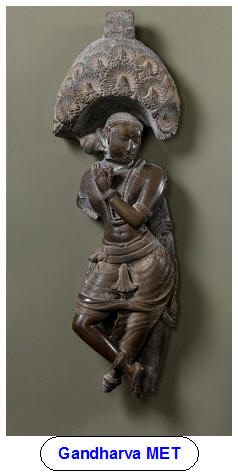 Gandharvas
live in the atmosphere, though you cannot see them. They are the
musicians of heavens; their knowledge is called Gandharva veda
(-vidyā). He is the guardian of Soma and rain cloud, a rain
maker.... His parents are Heaven and Earth. Gandharvas are the
rays of the sun which shine our universe. Atharva Veda claims
that the Gandharvas are phenomic Chimeras or Hybrids having
upper human body with shoulder wings and lower bird-like bodies.
They are capable of metamorphosis and appear like handsome
effeminate men. They are the purveyors and guardians of Soma
which causes hallucination and inebriation according to the
west, which is vigorously repudiated by Hindu saints, Sadhus.
(Hello Recreational pharmacologic aficionados (RPAs), Soma is
available in Indra's heaven locked in a vault whose doors are
reinforced with a spinning wheel with razor sharp spokes.)
Gandharvas
live in the atmosphere, though you cannot see them. They are the
musicians of heavens; their knowledge is called Gandharva veda
(-vidyā). He is the guardian of Soma and rain cloud, a rain
maker.... His parents are Heaven and Earth. Gandharvas are the
rays of the sun which shine our universe. Atharva Veda claims
that the Gandharvas are phenomic Chimeras or Hybrids having
upper human body with shoulder wings and lower bird-like bodies.
They are capable of metamorphosis and appear like handsome
effeminate men. They are the purveyors and guardians of Soma
which causes hallucination and inebriation according to the
west, which is vigorously repudiated by Hindu saints, Sadhus.
(Hello Recreational pharmacologic aficionados (RPAs), Soma is
available in Indra's heaven locked in a vault whose doors are
reinforced with a spinning wheel with razor sharp spokes.)
These Gandharvas are great musicians and yet have perspiration
with a strong earthy odor. This is because his mother is Earth.
Gandha (गन्ध
=
கந்தம்)
means fragrance. When soma is transported to the sacrificial
hut, they are always afraid of Soma being stolen from their
trucks, which is not different from the hijacking of liquor
truck. They invoke and utter Mantras to protect the fully loaded
trucks of Soma. "Move forward. O Lord of the world, to all thy
stations (the modern equivalent is the liquor stores). Let no
opponent find thee; let no robbers find thee; nor the Gandharva,
Viśvāvasu, injure thee (Taittirīya Samhita 1.2.9). As you may
notice, it appears hijacking of Soma is an inside job because a
Ghandarva himself hijacks or damages Soma. One way they get rid
of the bad Gandharva is by incantation. The transporter wears an
amulet to ward off thieves. The inimical Gandharvas, their
girlfriends or spouses (the Apsarasas) may cause insanity in
other good Gandharvas.
They (the insanity inducers) are paid off by propitiatory
sacrifices; it is like paying off the Somali hijackers of
ocean-going ships (Think of the movie Captain Phillips
based on true story--October 2013). The Gandharvas like to
hang in and around trees as teenagers hang around street corners
swilling beer and smoking pot when cops are not looking.
This does not mean Gandharvas are bad; that would stereotype;
there are a few bad apples here and there. Most are good and
engage actively manipulating the mind of others to generate pure
thoughts. In an act of edification, Taittirīya Samhita eulogizes
them and elevates them by calling them Candramas (moon),
Prajāpati (the Lord of men) and Vayu (Air-without which we
cannot live). To inculcate fear and respect, a Gandharva is also
called Death. A good dose of fear is an ingredient of respect.
Remember, he can cause premature death.
►▼
The west lumps the Gandharvas with Rākṣasas, Asuras, Nāgas,
Yakṣas... as the enemies of Indo-Aryan, and sometimes friends.
There is internal strife among these adversaries. Gandharvas
oppress the Nāgas, who are the sons of Kasyapa (who is also the
father of gods). King Purukutsa helps them cross the Narmada
River to vanquish them by exposing the hideout of the
Gandharvas. King Purukutsa is none other than an incarnation of
Lord Vishnu. You cross Vishnu, you are in whole lot of trouble.
Vishnu is a benign god; you can never get Him angry, but watch
out...
Why do motorists go wild and crazy during twilight driving?
Gandharvas and Apsarasas radiate cheer and charm during day,
sing and dance in the groves, mountains.... Come twilight, they
are up to mischief. They strike a person with instant insanity.
Come twilight and see the commuting motorists on Turnpikes,
Expressways, Parkways, Highways, Byways, roads and dead-end
streets. They drive like mad. They want to get home fast (to
pick up canoodling where they left off with Viagra or Cialis on
board). They curse. They show fingers, fists... Why? They
became insane in the twilight. Blame it on the Gandharvas and
Apsarasas. They can put you over the barrel, then go ahead,
revive and get you back to normal. It is misery for us and
sports for them. The twilight mad drivers turned lovers with
Viagra or Cialis on board make Āyus with their joy sticks.
Vyagra in Sanskrit means "
engrossed by, entirely occupied with." Occupied with what?
Joy
sticks. October, 20, 2013.
Once Varuṇa the god of sky, water, celestial ocean, Law and
Order, the Nether world and according to Ṛg Veda the Lord of
heavens and earth had suffered from erectile dysfunction (ED).
Since the Gandharvas are the purveyors of herbal medicine, they
restored his virility by prescribing and supplying him with ED
herbs. (I bet there is a leaf somewhere out there in the world
yonder one can chew and then plunge into pelvic-centric sports
and pastimes.)
If you see a horse, remember that the horse was the son of a
Gandharva chieftain in previous life. They look up to Varuṇa,
the presiding deity of horses. The horses draw the sun's chariot
whose path is under the aegis of the Gandharvas.
►▼
The Gandharvas are well known to protect virgins. They love
women and protect them wherever they are. Their parents do not
get involved in arranging their marriage. They simply fall in
love on their own accord and can marry without parental consent;
Gandharva marriage (Gandarva-vivaha) stands for love marriage.
Gandharvi is the female equivalent of Gandharva. The Gandharvis
are the ancestors of horses. Manthara, the sister of Bali, was a
Gandharvi in previous life. See, what comes out of a
Gandharvi: a horse.
Ref.: Sacred texts, Harper's dictionary of Hinduism, Dictionary
of Hindu Lore and Legend.
This first son Āyus is Life, the
Fire
(Agni) who is identified in Ṛg Veda as Hotar,
who is the intermediary between Devas (gods) and men, who brings
men and gods together, who carries oblations to gods, and boons
to men, and who takes forefathers to heaven.
Purūravas brings out Agni (Libido) hiding or latent in Urvasi.
Since Agni is Fire and son, one cannot go to heaven without a
son. The only way to heaven for a man is to have Fire (Āyus,
Agni, Hotar) as a son by kindling two sticks together, symbolism
for union.
Because of Agni's manifold beneficial functions, three fires are
maintained in the house.
Purūravas embraces Urvasi three times a day (fully clothed; in
the night he is naked in bed, not a stitch in sight on his
body.) and naturally there should be three fires. The western
equivalent mores for a couple would be to kiss, hug and say
three times a day, "I love you, Honey." The Gandharvas gave a
pot of fire and asked Purūravas to divide it into three fires so
he could get Urvasi back.
More on Purūravas and Urvasi from Sacred Texts, Wikipedia and
Indo-Aryan Mythology by Narayan Aiyangar
Purūravas is the Belt of Orion; Urvasi is Rohinī.
The Constellation of Orion's Belt of three stars is known to Ṛg
Veda as the Antelope in the moon (Mriga =
मृग).
The three bright stars of the Belt of Orion are ζ Ori (Alnitak),
ε Ori (Alnilam),
and δ Ori (Mintaka).
Alnitak:
800 light years away from earth. 100,000 times more luminous
than the Sun.
Alnilam:
1340 light years away from earth. 375,000 times more
luminous than the Sun.
Mintaka
is 915 light years away from earth. 90,000 times more luminous
than the Sun and is a double star: the two orbit each other
every 5.73 days
Purūravas and Urvasi are not the sun and the dawn.
Purūravas or the Moon is the son of the sun.
Purūravas and Urvasi are the Moon and his favorite consort
Rohinī; the two sticks (Araṇīs) are their vernal (woody)
representations coming from Aśvattha tree.
The two Araṇīs (wooden sticks) are necessary to generate fire
for the sacrifice.
Urvasi is Rohinī (Vāk, speech, word or knowledge).
Urvasi (Aldebran = Orange Giant Star in Zodiac Constellation 65
light years away) comes down in the winter nights to woo the
moon, who is the man of the sky, and who dies on every New Moon
day only to rise again. Purūravas is the regent or Devatā of
Orion's Belt known as Mrigasiras (Deer head, the Hunter) where
Urvasi (Rohinī-Aldebran) and Purūravas-Belt of Orion are
proximate to each other. Two Asterisms Rohinī and the
Orion's Belt consort.
Rohinī-Aldebran-Urvasi
meets and mates with
Purūravas-Orion Belt
in the nights of winter and gives birth to summer light, the
fire or the Āyus (Life).
►▼
Amāvasya (= Amā = together. Vas = to dwell) is the night
of the new moon when the sun and the moon dwell together, and
the first day of the first quarter when the moon is invisible.
On the first day of the New Moon, the moon dies or is invisible,
because the moon has descended on the flora (trees) to exist in
them. The New Moon is without rays and therefore naked.
The two lambs (rams) are the Aśvins, who preside over dawn.
The lambs are tied down to Urvaśī’s bed during night. They
are let loose by the Gandharvas, the rays of the sun during day.
The most important tree is the Aśvattha tree (Sacred Fig Tree)
representative of all trees. Moon is the Lord of flora:
Vanaspati. The Araṇīs made of Aśvattha wood are a form of Moon.
The Waxing and Waning of the Moon are caused by entry and exit
of the souls.
Indo-Aryan Mythology
The souls depart earth, go to the Moon and contribute to its
waxing; its waning coincides with the departure of the souls
from the moon to take birth on earth. The moon poses questions
to the arriving souls; satisfactory answers puts them on a
course for a Higher
Life; the failed souls are sent back to earth in the form of
rain, worm, fly, fish, bird, lion, boar, toothed animals. What
the man
thinks of at the time of death, that he becomes: When he thinks
of Brahman, he goes to Brahman; any thought other than on
Brahman sends him back to earth as an animal or human. The early
Indo-Aryan postulate conceives of transmigration as a round
wherein the souls move in circles; much later came the idea of
liberation (Moksa) from the cycle of birth, death and rebirth.
Moksa is
shaking off, freeing oneself, letting oneself loose. It is a
late Vedic concept. It quotes
Bṛhad Āraṇyaka Upanishad
chapter
III.1.4-5 as follows: Mukti is effected by
hotṛ, Adhvaryu, Udgātṛ and Brahman,
who are the four priests. The priests served as the
facilitator of Mukta or release from metempsychosis based on
rituals.
Hotṛ:
Priest who offers oblations or burnt offerings and reciter of Ṛg
Veda
Adhvaryu:
The priest who performs Adhvara: measuring the ground, building
the altar, prepare the sacrificial vessels, fetching wood and
water, lighting the fire,
bringing the animal to immolate it,
chanting hymns of Yajur Veda. Adhvaryu is the inventor of Zero.
UdgAtr:
the chanter of Sāma Veda hymns at Soma Sacrifice.
Brahman:
Learned supervising priest of the sacrifice, making right the
mistakes of the above three priests.
Dharmasutras Translation by Patrick Olivelle. Page 325.
Condensed.
My comments are between brackets.
A Brahmin is Fire [Fire is all-consuming and purifying]. The
sacrificial altar is the body of the Brahmin. The sacrificial
animal is himself [though
he brings in a stand-in for the sacrifice].
Its rope is his intellect. The offertorial fire
(the
offering of the unconsecrated elements that is made to God by
the celebrant in a Eucharistic service.)
is the mouth of the seated Brahmin; his navel is the southern
fire; the fire of his stomach is householder's fire; his
out-breath is Adhvaryu priest [the
immolator of the animal];
his in-breath is the Hotṛ priest [the
chanter of Ṛg Veda];
his inter-breath is the Brahma priest [the
supervising priest, High priest, Priest-in-chief];
his link-breath is Udgātṛ priest [Reciter
of Sāma Veda];
his sense organs are the sacrificial vessels. This sacrifice
rescues all these priests from sin.
►▼
The moon is born from the sun. (If you are of scientific bent
and mind, you would miss the mythology.) That moon being
Purūravas was created to defeat the Dasyus (the natives).
The solar light nourishes the moon to make him shine and kill
the darkness. The moon in turn nourishes trees and plants.
Urvasi goes to the house of Purūravas where they engage in
consortium. It means Rohinī comes to her husband's house.
She went from Day to Night. Coming to her husband is
coming to the Kurukṣetra, the sacrificial ground, which is the
little Orion. In the diagram, Orion (Purūravas) is the
sacrificial pit. There are three sacrificial altars; Gārhapatya,
Dakṣiṇāgni, and Āhavanīya. This concave square pit is Orion on
earth and the dark shadow of Orion in the moon telling that
Little Orion as a sacrificial pit is on earth and the moon.
Urvasi loves Purūravas = The dawn rises.
Urvasi sees Purūravas naked = the Dawn is gone. The day is
light. (The Dawn merged into daylight.)
Urvasi finds Purūravas again = the sun is setting; night is
coming, time for consortium.
Vaishnavites are vehemently opposed to animal sacrifice, but
recite the Vedas, and feed animals, guests and manes. In a
multi-denominational temple, when the time comes for animal
sacrifice, the practice kept the immolation of the animal out of
sight of Bhagavān Krishna by a screen.
In Vaishnava tradition and according to Sahasranamam, Bhagavān
is PutAtma1,
Paramatma2,
Muktanam parama gatih3.
Mukkur Lakshmi Narasimhachariyar questions who that Paramatma2
is. What is the reason for invoking Him as such? He is present
in five Maha Yagnas (ஐவகைவேள்வி):
Devatā Yagnam1,
Bhuta Yagnam2
, Bruhma Yagnam3
, Manushya Yagnam4,
and Pitru Yagnam5.
Vishnu is Yagna-Purusha (யக்கியபுருடன்--yakkiya-purutan)
meaning that Vishnu assumes the form of Sacrifice. What we eat
is a great Yagnam. We eat not to sustain our body but for the
Lord inside us. To perform Yagnam, we need a place. This body is
the place for such Yagnam (sacrifice). Bhagavān says this body
is Kṣetra (field). In our body the Homa Kundam is the mouth.
Homa Kundam = Fire Pit = Pit dug out in the ground for keeping
sacrificial fire.
Five kinds of Sacrifice which a householder is enjoined to
perform daily.
கடவுள்வேள்வி1
(
தேவயஞ்ஞம்1),
பூதவேள்வி2
(பூதயஞ்ஞம்2),
பிரமவேள்வி3(
பிரமயஞ்ஞம்3),
மானிடவேள்வி4(மனுஷ்யயஞ்ஞம்4)
தென்புலத்தார்வேள்வி5
(பித்ருயஞ்ஞம்5
) = Devata Yagnam1, Bhuta Yagnam2 , Bruhma Yagnam3 , Manushya
Yagnam4, and Pitru Yagnam5.
வேள்வி
in Tamil =
யஞ்ஞம்
in transliterated Sanskrit = Sacrifice.
Devata Yagnam1 =
தேவயஞ்ஞம்
= sacrifice to deities performed in the consecrated fire.
Bhuta Yagnam2 =
பூதயஞ்ஞம்
= Giving food to animals.
Bruhma Yagnam3 =
பிரமயஞ்ஞம்
= Learning and Reciting the Vedas.
Manushya Yagnam4 =
மனுஷ்யயஞ்ஞம்
= Feeding of guests.
Pitru Yagnam5 =
பித்ருயஞ்ஞம்
= Offering of libations to ancestors.
Tretāgni = Three fires
Gārhapatya
is a family sacrificial fire handed down to the male progeny (Y
Chromosome) right down the line and links generations of the
family. Gārhapatya should be kept alive all the time over many
generations. If it goes out, it is relit from Āhavanīya with
accompanying atonement.
Gārhapatya is the Fire of Lord of the household,
is the guest of the house, sanctifies and witnesses every rite.
It is the Fire of the Earth. Without this domestic fire, no
rites like birth, marriage, death... can be performed.
Dakṣiṇāgni
is the Southern Fire because offering to Pitrus (South-living
dear departed ancestors) are made in this fire. The fire is used
to cremate the dead and is called Flesh-eating Fire. The West
says this fire drives away evil spirits, who constantly threaten
the sacrifice. It is maleficent fire as opposed to beneficent
fire of Gārhapatya. It is the Fire of the Atmosphere.
Āhavanīya is the Eastern Fire lit first, that should be kept alive perpetually, that is the womb or seat of God and that by which one ascends to the celestial world. If it extinguishes, it is relit from Gārhapatya fire and atonement made immediately. Otherwise the eldest son of the initiator of the sacrifice would die. It is the Womb of the goddess. He who reveres it goes to heaven. It is the Fire of heaven.
